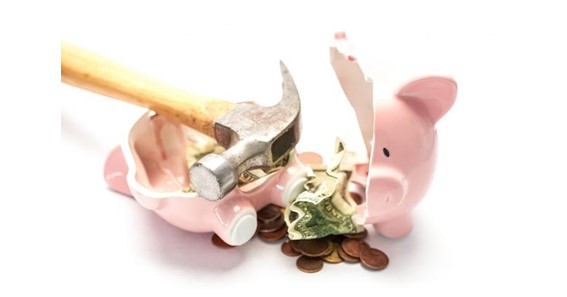You never know when a surprise expense might wind up in your inbox. In fact, it can arrive at the worst possible time, like when your fund is nearing empty.
Your emergency fund is like a gas tank. Keep it full, and it’ll take you where you want to go; but at empty, it doesn’t have much mileage. You may only have enough savings to pay for half of an unexpected auto repair or medical test.
Unfortunately, an almost-empty emergency fund is a reality of using this account as your financial safety net. After all, you can use up your emergency fund repairing your car, only for your furnace to stop working out of the blue before you can restock your savings.
What then?
An Emergency Fund is Not the Only Way to Handle Emergencies
An emergency fund isn’t the only financial safety net available. Good thing, too. Nearly half of all Americans don’t have enough cash set aside to handle a surprise $400 expense.
If you don’t have two dimes to rub together, here are some alternatives you may consider.
Cash Advance Loan
If you have to deal with an urgent, unexpected expense without savings, you can always search out an online cash advance for help. A website like MoneyKey makes it easy to learn more about how a cash advance may momentarily stand in for your savings in emergencies, provided you use it responsibly.
Assistance from Loved Ones
If you don’t think you can afford an online cash advance, you should consider asking a loved one for help carefully. There’s only a fifty-fifty chance it works out.
Research shows money can sour even the closest relationship, with nearly half of people who lent money to friends or family saying they experienced a negative consequence. Co-signers — people who guarantee a personal loan in another’s name — faced similar difficulties.
Negotiate with Your Creditor
A better alternative may be to ask your creditor for assistance. Many businesses are willing to work out a plan that lets you pay back what you owe in installments, rather than one lump sum.
At the very least, breaking up your payments this way may mean you can borrow a smaller cash advance that you can actually afford. However, you might be able to pay these installments without having to borrow at all.
Make Refilling Your Emergency Fund Your Top Priority
Take care of your unexpected expense first, then consider how you’ll refill your emergency fund. This may take some extensive work with your budget to unearth spending you can eliminate.
If you can’t find any unnecessary spending in your budget, you have two options. Take on the tough job of limiting your essential spending (like how much you spend on rent and utilities — often by moving) or earning more income.
What if you took on a cash advance to handle your emergency? Financial advisor Dave Ramsey says you should aim to save $1,000 instead of the typical three to six months of living expenses at first. That way, you’ll have some protection against the unknown, while you can still put most of your money towards paying down debt. You can beef up your account when you have your debt under control.
